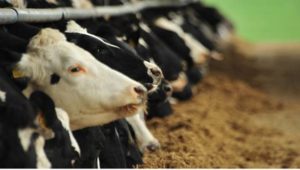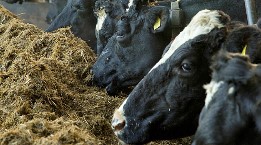The provision of feed, water and shelter will minimise the impact of this cold-weather spell on your animal’s health, well-being and production.
LIVESTOCK
Cattle can cope with low temperatures provided they have plenty of feed. Even young calves are not seriously affected by low temperatures, provided that they have shelter from chilling wind and driving snow or rain.
It is essential to keep water supplies available to animals throughout the cold conditions. This is particularly important at this time of year when cows are calving or lactating and sheep lambing, giving rise to an increased demand for water.
In the case of sheep flocks, it is essential that they are brought to a sheltered area when there are bad snow or blizzard conditions, as wind chill will have a much bigger effect in exposed areas.
FEED & WATER PROVISION
Livestock will survive for a period of time without food, but animals will show signs of dehydration if left longer than 24 hours without water.
The most vulnerable groups of animals to water shortage are milking cows, animals on high concentrate diets and animals fed hay, straw or other very dry feeds.
- Milking cows need access to drinking water at all times.
- A cow producing 30 litres of milk and being fed a silage-based diet requires 75-90 litres (16-20 gallons) of water per day.
- Finishing animals on high levels of dry feed, such as high concentrate diets, have a big demand for water – these animals should also have free access to water.
- An animal consuming 10kg dry matter of dry feed will need 60 litres (13 gallons) of water daily.
- Concentrate feeding should be reduced and animals put on ad-lib silage where an adequate water supply cannot be provided.
- If access of livestock to water has been restricted and then suddenly made available, over-drinking or water toxicity can cause health problems – allow gradual access to water when animals are extremely thirsty.
As animals use up more energy to keep warm in cold conditions, all stock will benefit from additional concentrate feeding this coming week.
OUT-WINTERED STOCK
Cattle can cope with low temperatures provided they have plenty of feed and water. Frozen or snow-covered fields no longer provide nourishment to animals and supplementary feeds must be provided.
Sheep are the largest group of out-wintered stock.
- Ewes in late pregnancy or after lambing have high energy requirements.
- Ewes should get a supply of forage (hay or silage) and about 0.5 kg meal/day where there is a blanket of snow and no grass available.
- Sheep need access to water where dry feeds (hay/meals) are fed. Introduce meal gradually to avoid acidosis.
- Water supply is a huge problem with outdoor stock. Surface ice in drinkers needs to be broken twice per day.
FORAGE CROPS
- Heavily frosted brassica crops (kale, rape, etc.,) if consumed at a high rate will cause scouring and digestive upsets.
- Brassica crops are normally grazed in-situ and in most cases could be expected to have thawed by midday, when the stripped wire can be moved and animals fed – this may not always be the case when daytime temperatures are very low.
- Do not feed brassica crops if frozen, but bring in silage or hay in round feeders.
- Avoid feeding frosted beet, as it contains oxalic acid, which can be poisonous if consumed in large quantities.
- Fodder beet that is stored outside can be damaged by severe frost. Cover outdoor clamps of beet with straw and an old silage cover to prevent freezing and keep off fresh snowfalls.
ANIMAL SAFETY IN YARDS
- In order to ensure a safe environment for animals in open yards, these should be gritted or sanded to provide animals with grip and to prevent injuries.
- Clear snow and prevent ice from building up around scrapers and at the entrance to the tank.
- Keep the scraper ratchet mechanism and tracks free of the frozen slurry.
- In extremely cold conditions the collecting yard, passageways inside sheds and parlour exits may also freeze solid and need to be gritted to prevent animal injuries.
The provision of feed, water and shelter will minimise the impact of this cold-weather spell on your animal’s health, well-being and production.
Article from Glanbia.
